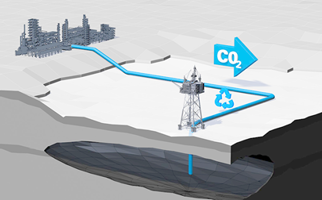
Oil and gas production in the UK increased by more than 4% in 2018, averaging 1.7 million boe per day, according to new report from the Oil and Gas Authority.
The “Projections of UK Oil and Gas Production and Expenditure Report” published today, estimates that UK oil and gas production over the period 2016–2050 is projected to be 3.9 billion barrels of oil equivalent (boe) higher than projections four years ago (in March 2015).
Compared with the previous projection last year, this is equivalent to gaining an additional four years of production (at the present rate) from the UK's currently largest producing oil field.
In 2018, oil production alone rose to 1.09 million barrels per day - up 8.9% on the previous year and the highest UK oil production rate since 2011.
This increase can be attributed to over 30 new fields coming onstream since 2015, improved production efficiency and asset integrity, the realisation of enhanced oil recovery (EOR) projects and the UK’s offshore licensing rounds’ continued focus on associated exploration, appraisal and development commitments.
Meanwhile in 2018, gas production fell by 3.5% to 0.61 million boe per day; Operating Costs (OPEX) rose slightly and capital expenditure again fell significantly in the basin.
The projections and the estimates of expenditure were provided to the Office for Budget Responsibility ahead of the Chancellor’s Spring Statement on 13 March 2019 and are based on data collected from the OGA’s UKCS Stewardship Survey. Detailed field-by-field data was provided to the OGA in early 2019 by all current UKCS oil and gas operators.
Other findings of the report include:
- Total operating cost (OPEX) rose by 6.4% driven by higher activity, while unit operating cost (UOC) rose only marginally by 2.2%, from £11.4/boe in 2017 to £11.6/boe in 2018, indicating stable cost efficiency.
- Capital expenditure (CAPEX) fell for the fourth straight year. This downwards trend of UK oil and gas upstream investment is however, expected to be halted in 2019, with a 4% increase projected.
- Annual decommissioning expenditure has risen year on year since 2015, with 2017 to 2018 seeing a 9% increase to £1.45 billion, reflecting a higher level of decommissioning activity taking place. The five year outlook (2019–2023) projection for decommissioning expenditure is down 18% from the previous assessment last year.
Head of Performance, Planning and Reporting at the OGA, Loraine Pace, said: “The 3.9 billion barrels identified is great news with 2018 being a productive year. New discoveries such as Glendronach and Glengorm highlight the future potential of the basin which could be boosted further with new investment, exploration successes and resource progression. The OGA continually supports industry in efforts to revitalise exploration, through Area Plans and promoting new technologies.”
Ends
Notes to editors:
- The Projections of UK Oil and Gas Production and Expenditure Report is available here.
- The future rate of production is dependent on several different factors including the level of investment and the success of further exploration. A significant share of future oil and gas production is expected to come from new fields and major projects in existing fields.
- The “Vision scenario” production profiles charted (see report) are consistent with the Vision gross production revenue lines in the “big opportunity” chart on page 5 of Vision 2035.
For more information, please contact Tracey Miller, communications manager at the OGA:
Tel: 0300 020 1072 or Email: Tracey.Miller@nstauthority.co.uk


